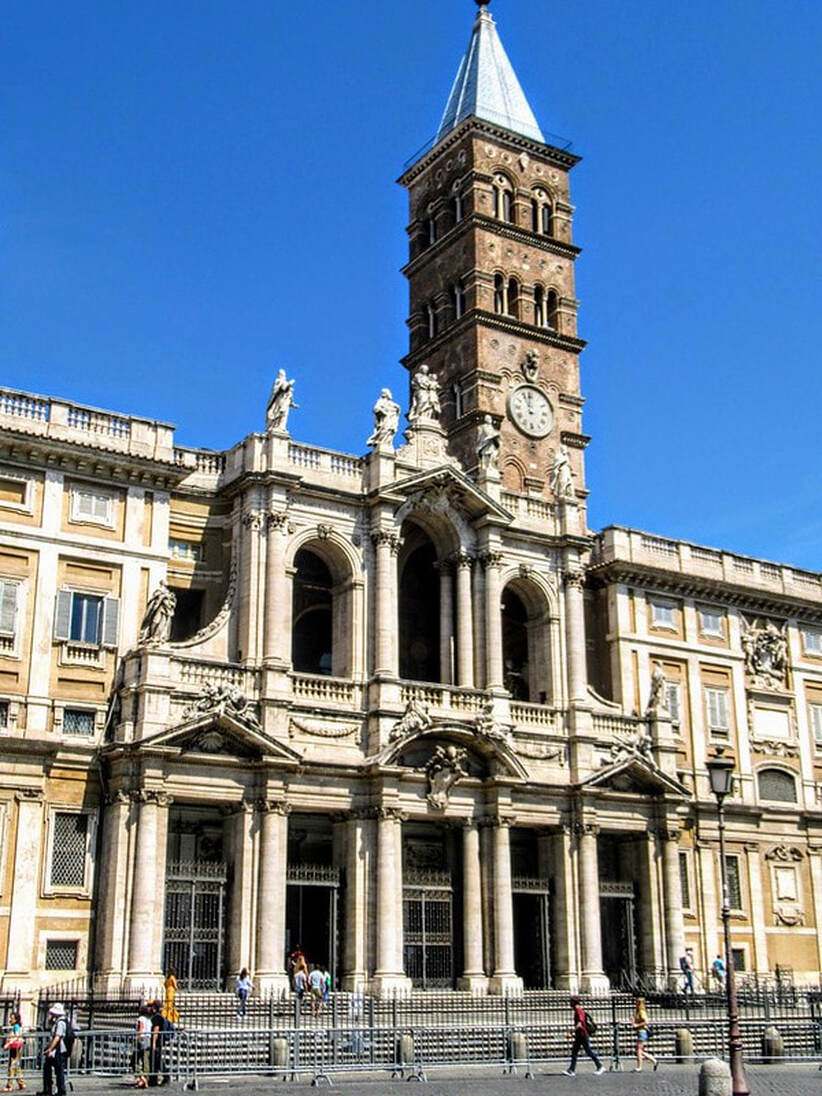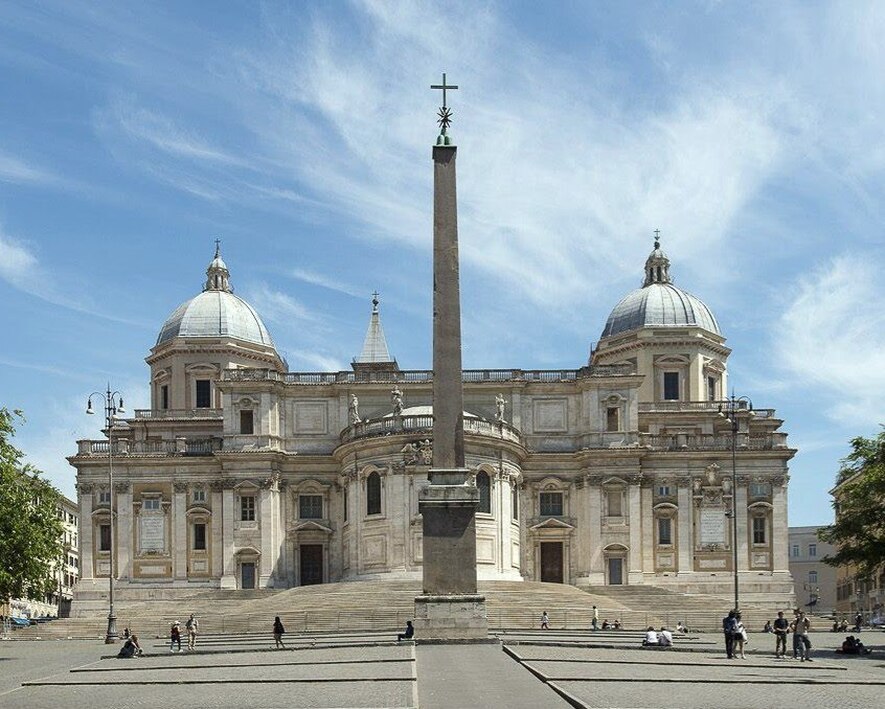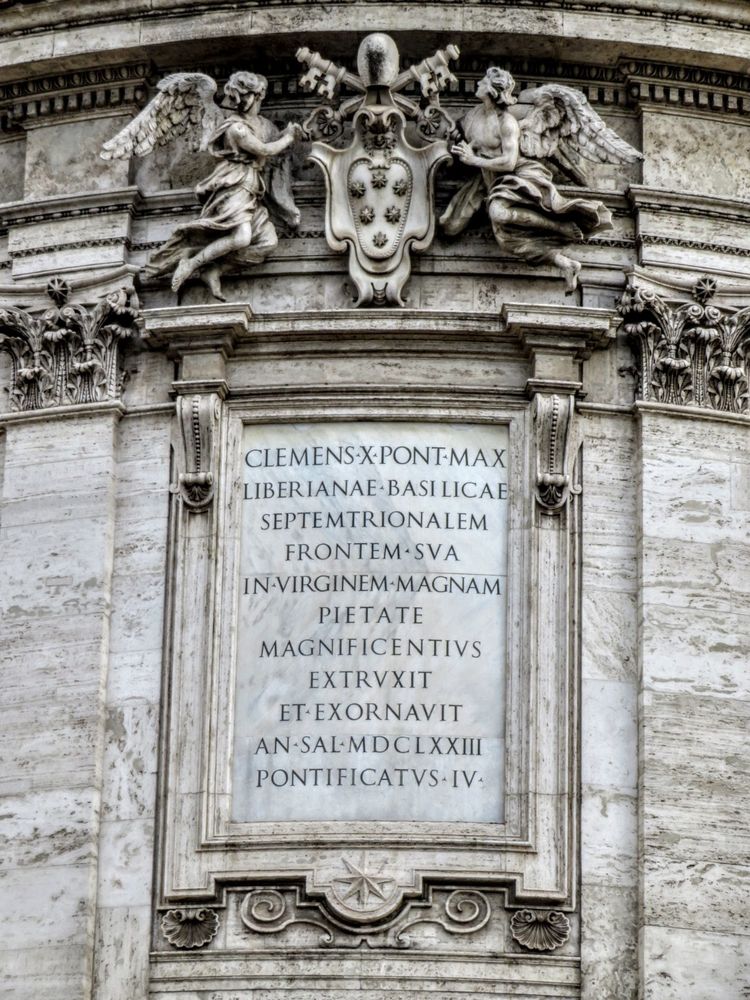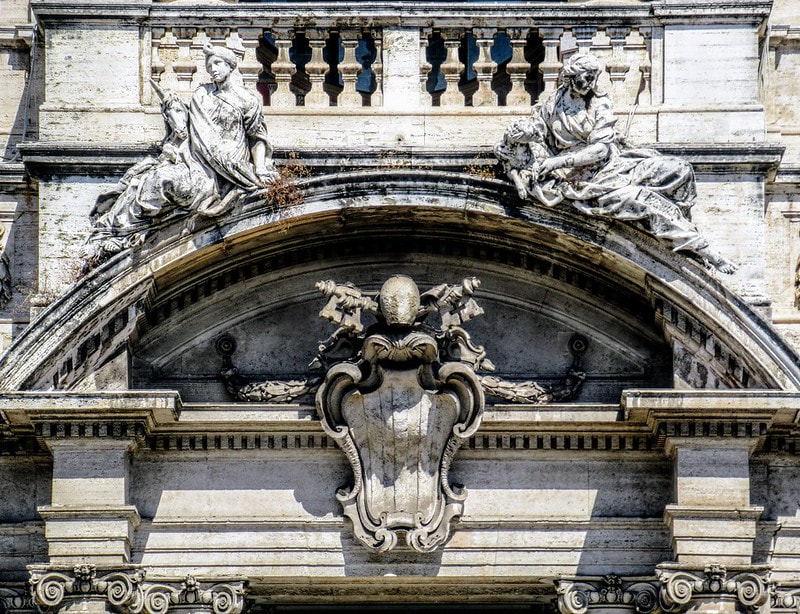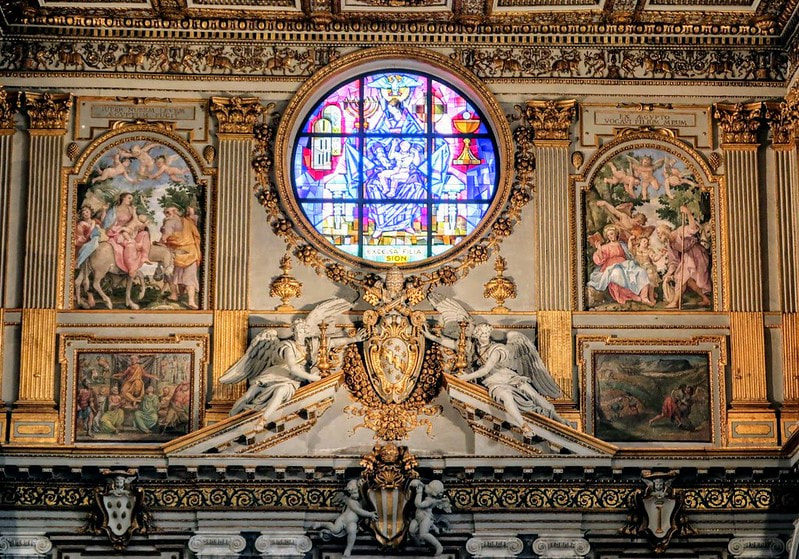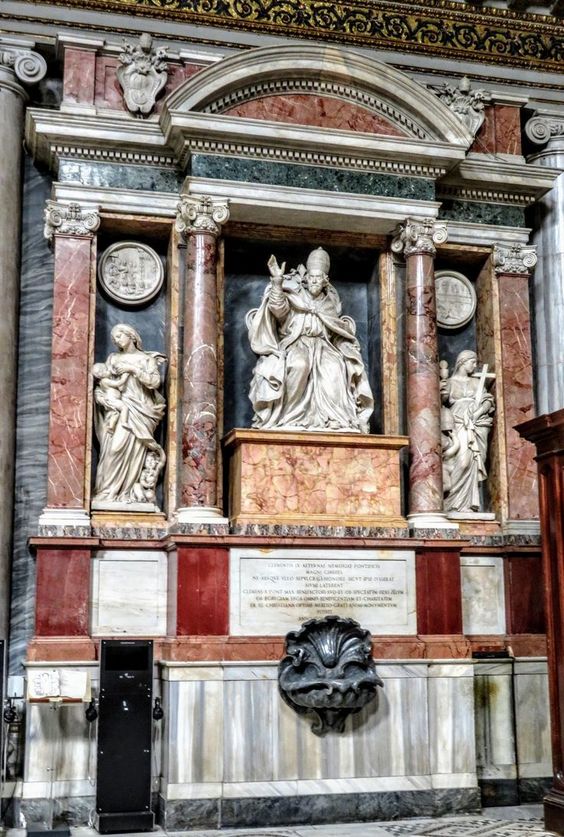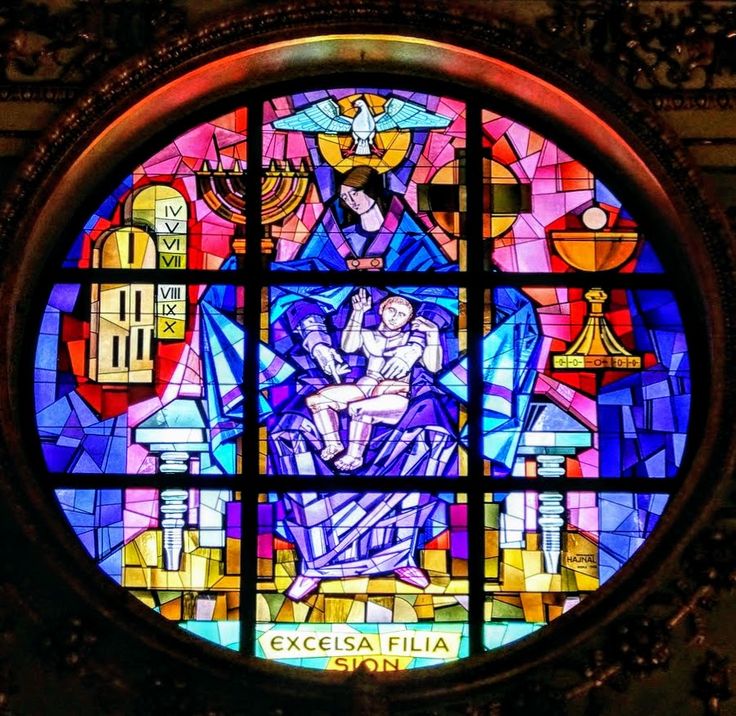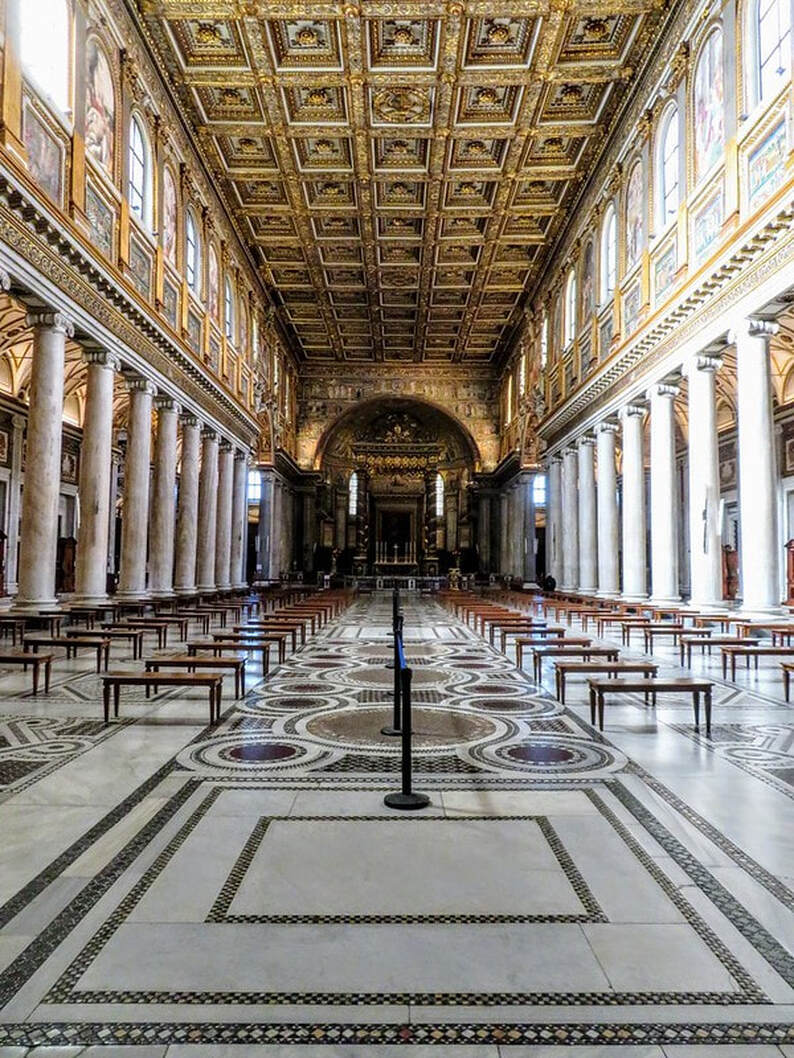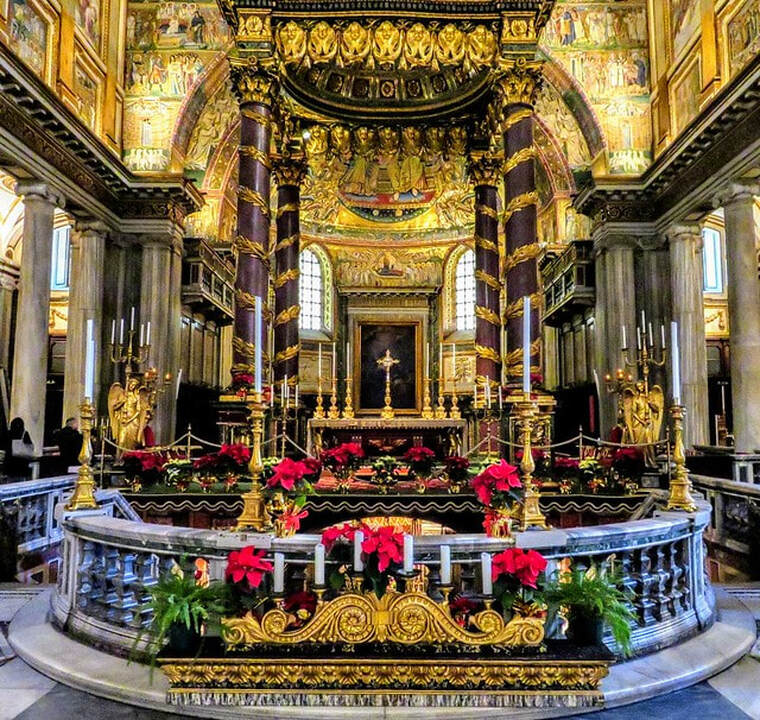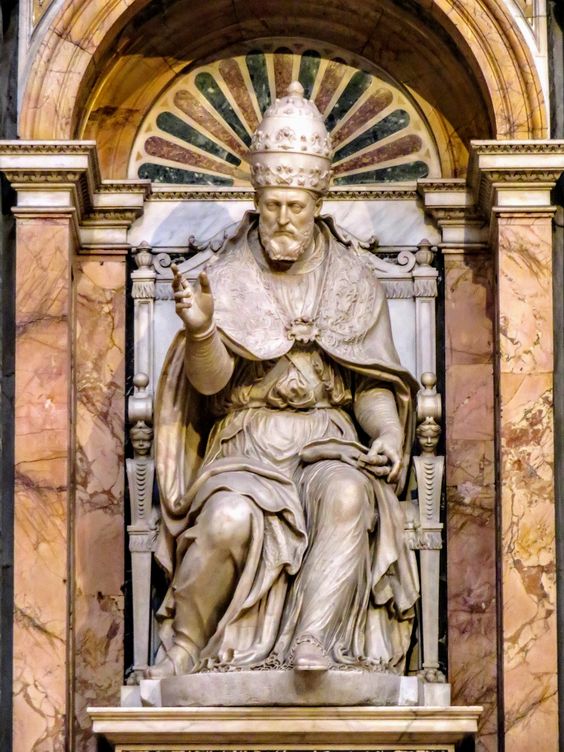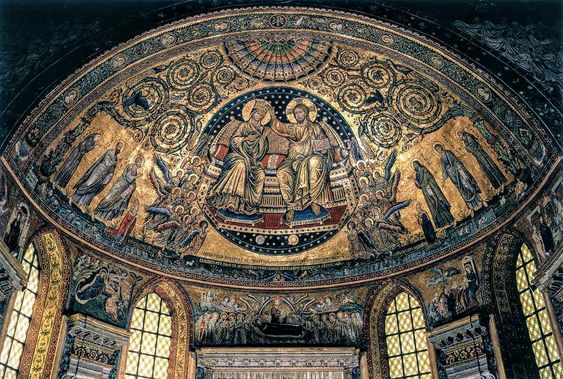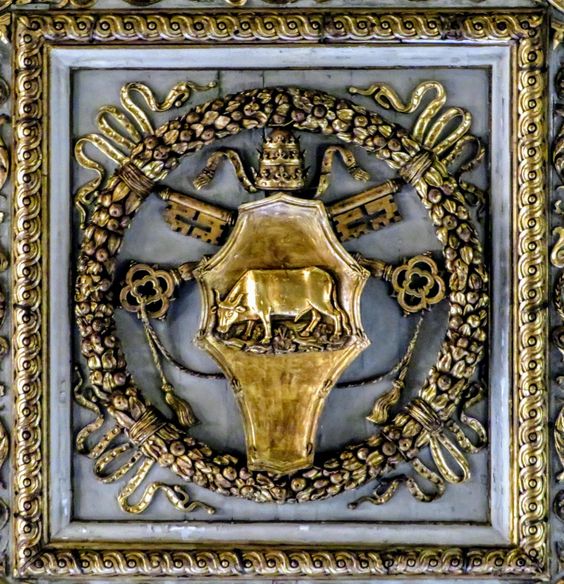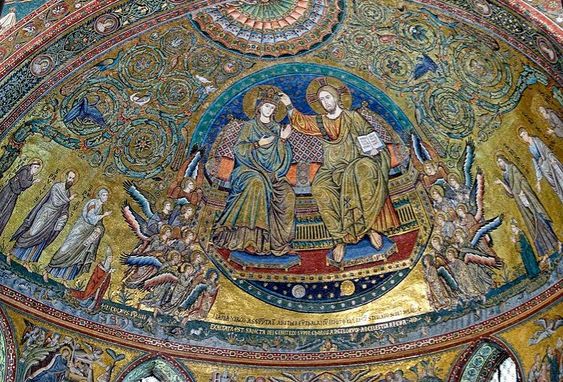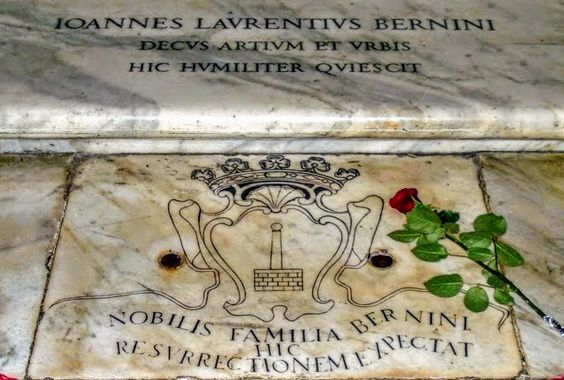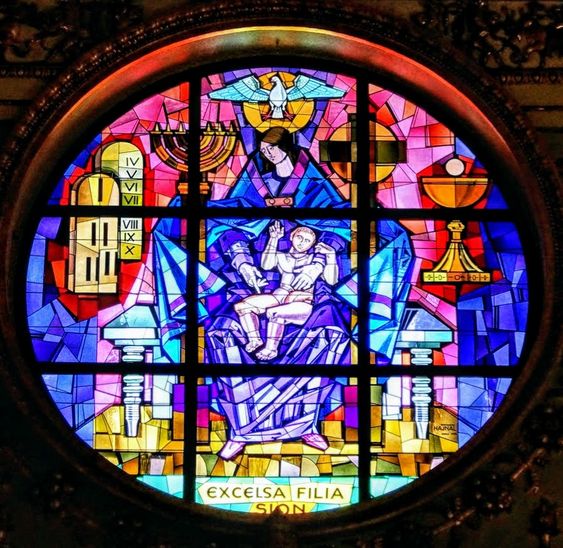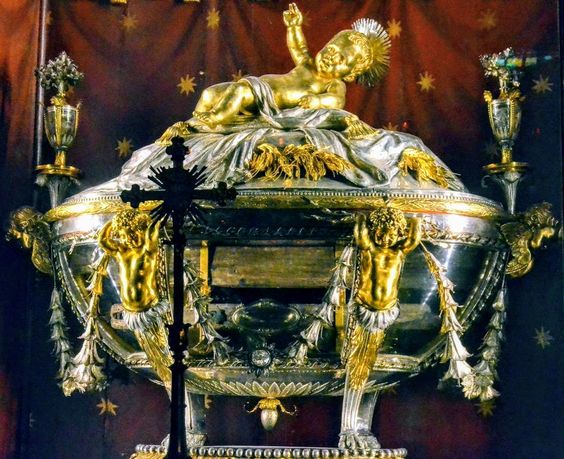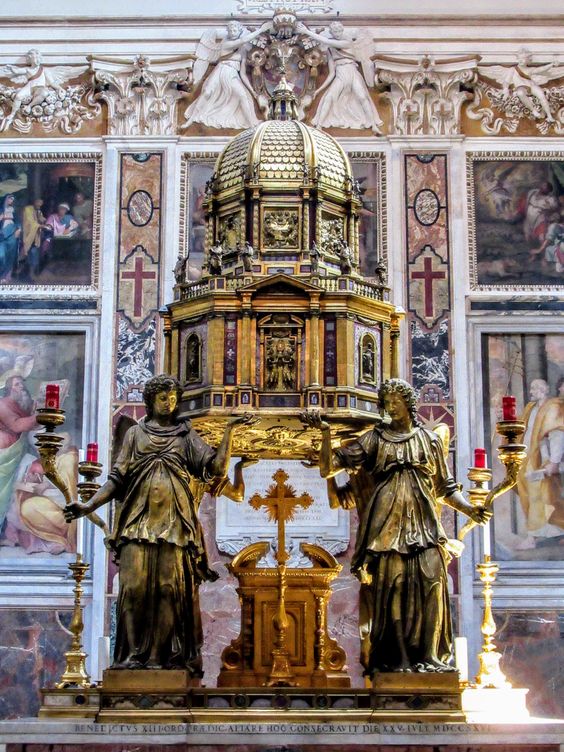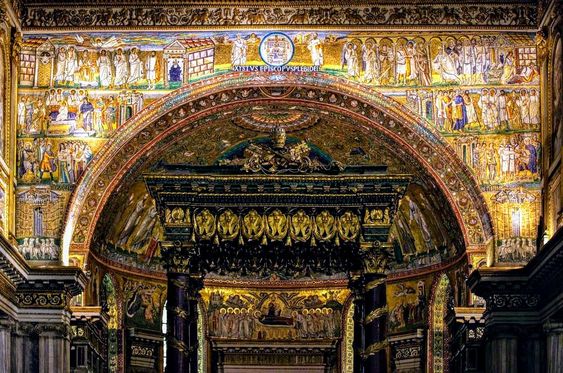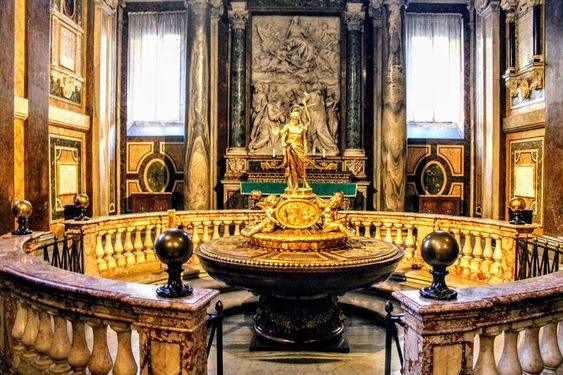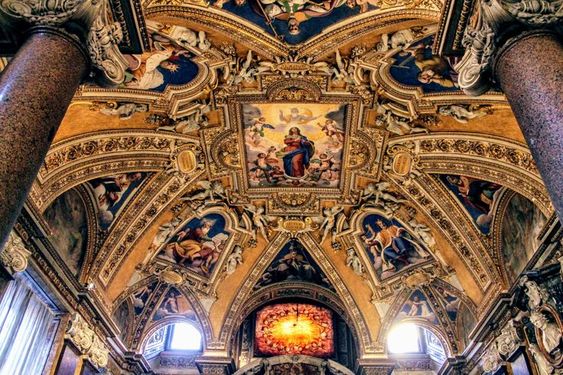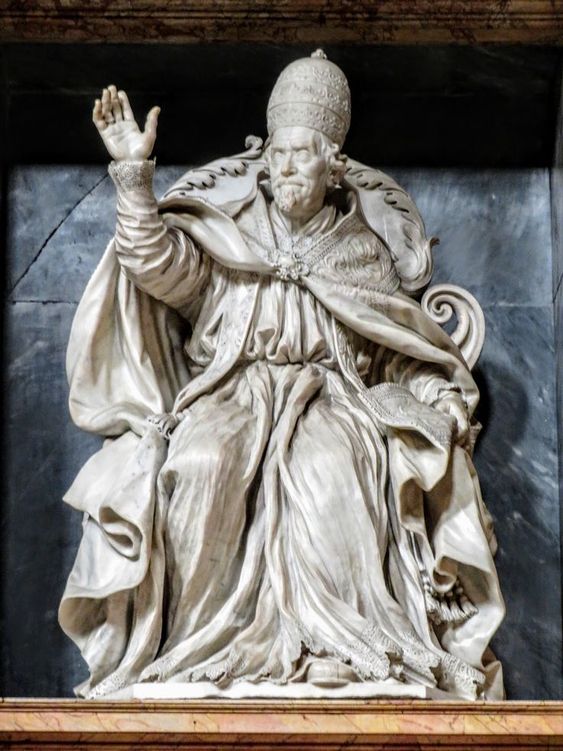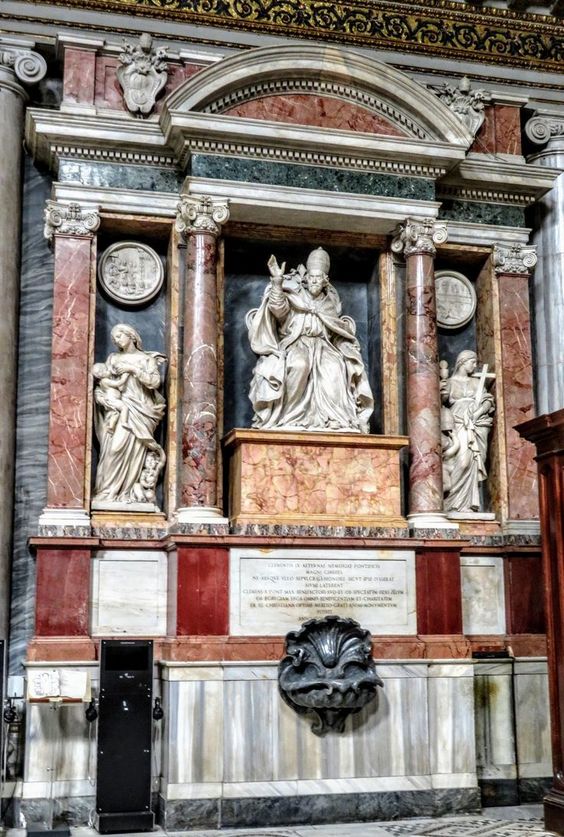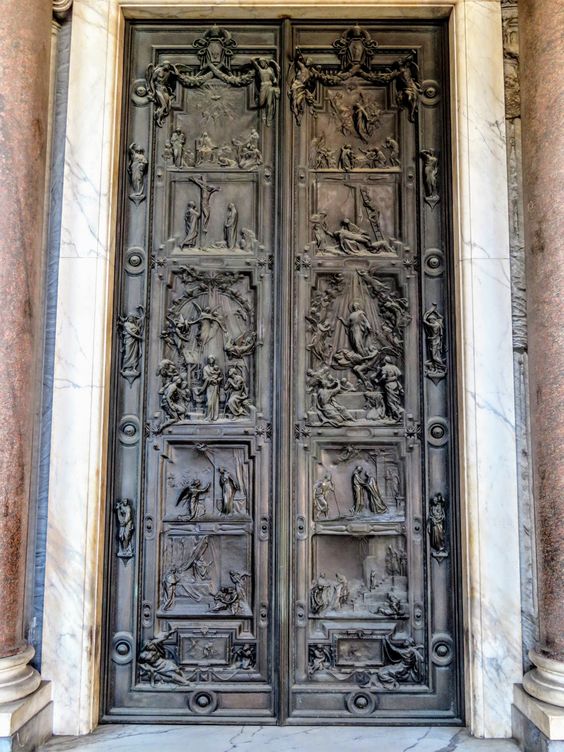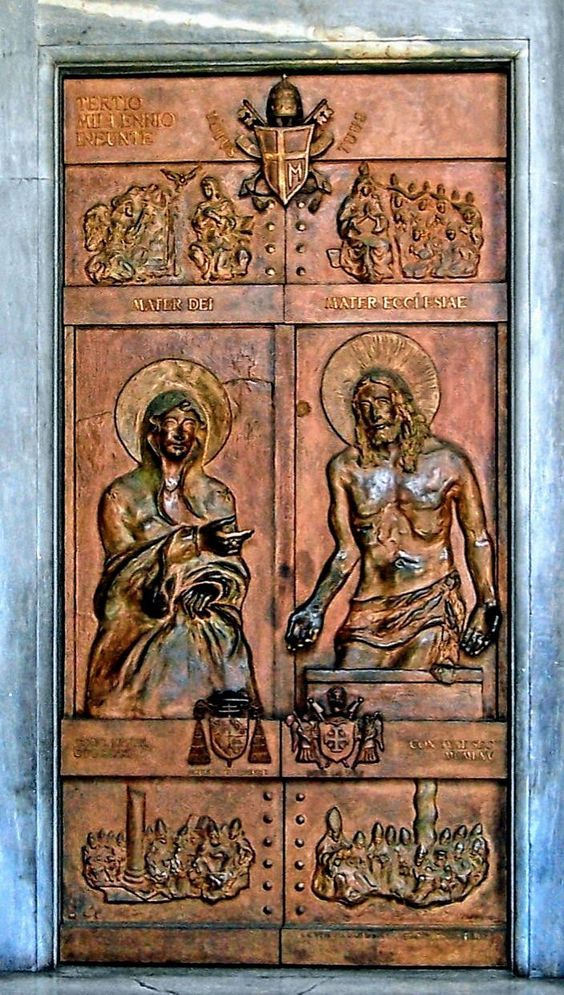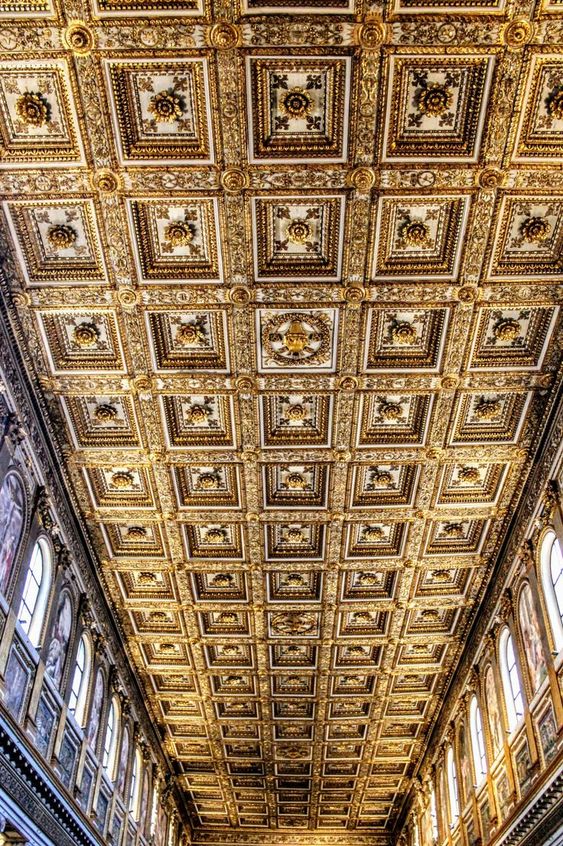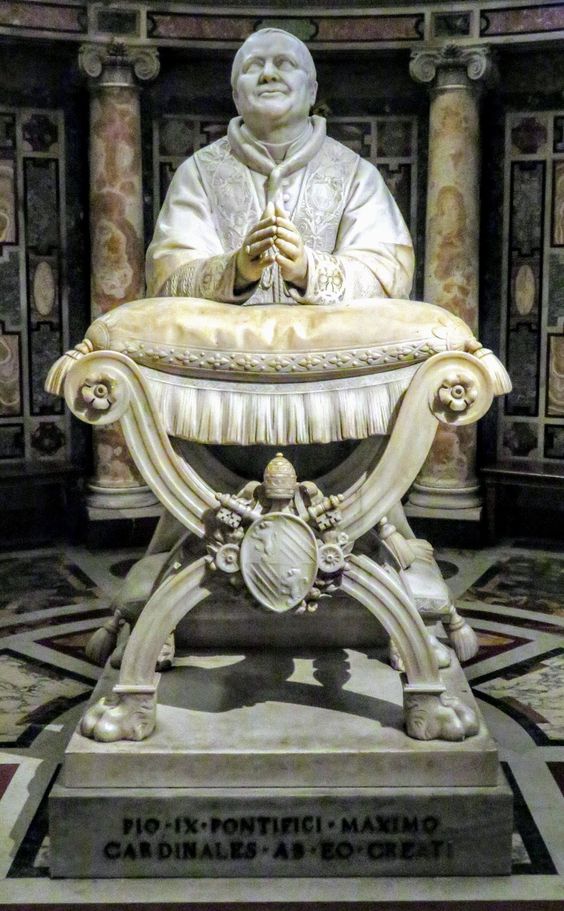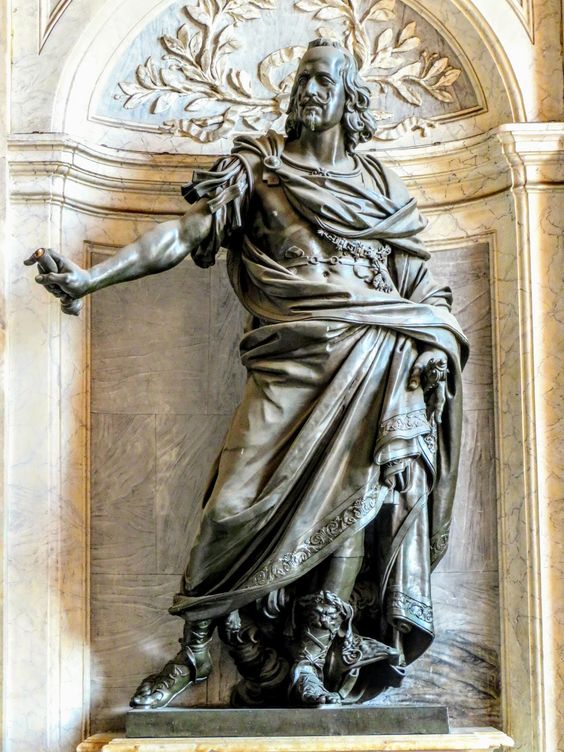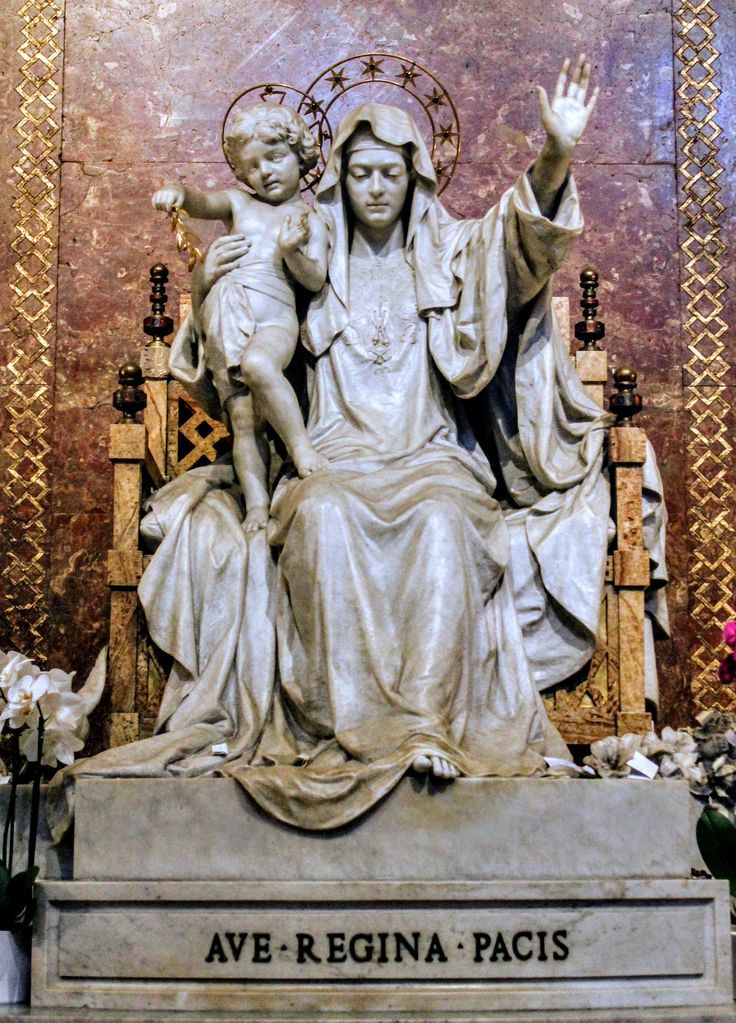- Home
- Walking Tours
- Blog
-
St Peter's Basilica
- Altars
- Baldacchino
- Chair of St Peter
- Chapel of the Baptistery
- Chapel of the Bl. Sacrament
- Chapel of the Choir
- Chapel of the Pieta
- Crossing >
- Dome
-
Monuments
>
- Countess Matilda of Canossa
- Maria Clementina Sobieska
- Queen Christina of Sweden
- Pope Innocent VIII
- Pope Paul III
- Pope Gregory XIII
- Pope Gregory XIV
- Pope Leo XI
- Pope Urban VIII
- Pope Alexander VII
- Pope Clement X
- Pope Innocent XI
- Pope Alexander VIII
- Pope Innocent XII
- Pope Benedict XIV
- Pope Clement XIII
- Pope Pius VII
- Pope Leo XII
- Pope Pius VIII
- Pope Gregory XVI
- Pope Pius X
- Pope Benedict XV
- Pope Pius XI
- Pope Pius XII
- Pope John XXIII
- The Stuarts
- Nave
- Portico >
- Statue of St Peter
- Statues of Founder Saints
- Transept
- Tribune
- St Peter's Square
- Vatican Museums
- Sistine Chapel
-
Fountains
- Trevi Fountain
- Fontana della Barcaccia
- Fontana della Peschiera
- Fountain in Piazza Colonna
- Fountain in Piazza delle Cinque Scole
- Fountain in Piazza dell' Aracoeli
- Fountain in Piazza Nicosia
- Fountain in Piazza di S.M. in Trastevere
- Fountain of Moses
- Fountain of Neptune
- Fountains of Piazza Farnese
- Fountain of Ponte Sisto
- Fountain of the Acqua Paola
- Fountain of the Bees
- Fountain of the Cannonball
- Fountain of the Frogs
- Fountain of the Four Rivers
- Fountain of the Goddess Roma
- Fountain of the Lateran Obelisk
- Fountain of the Mask
- Fountain of the Moor
- Fountain of the Naiads
- Fountain of the Pantheon
- Fountains of Piazza del Popolo
- Fountain of the Porter
- Fountains of St Peter's Square
- Fountain of the Seahorses
- Fountain of the Triton
- Fountain of the Turtles
- Fountains of the Two Seas
- Four Fountains
- Rioni Fountains
- Street Fountains
- Venice Marries the Sea
- On This Day in Rome
-
Churches
- Chiesa del Gesù >
- Chiesa Nuova
- Lateran Baptistery
- San Bartolomeo all' Isola
- San Benedetto in Piscinula
- San Bernardo alle Terme
- San Carlo ai Catinari
- San Carlo al Corso
- San Carlo alle Quattro Fontane
- San Clemente >
- San Crisogono
- San Francesco a Ripa >
- San Giorgio in Velabro
- San Giovanni a Porta Latina
- San Giovanni dei Fiorentini
- San Giovanni in Laterano >
- San Girolamo della Carità >
- San Gregorio Magno
- San Lorenzo fuori le Mura
- San Lorenzo in Damaso
- San Lorenzo in Lucina
- San Luigi dei Francesi >
- San Marcello al Corso
- San Marco
- San Martino ai Monti
- San Nicola in Carcere
- San Pancrazio
- San Paolo fuori le Mura
- San Pietro in Montorio
- San Pietro in Vincoli
- San Saba
- San Salvatore in Lauro
- San Sebastiano fuori le Mura >
- San Silvestro in Capite
- San Vitale
- Sant' Agnese fuori le Mura
- Sant' Agnese in Agone
- Sant' Agostino
- Sant' Alessio
- Sant' Anastasia
- Sant' Andrea al Quirinale
- Sant' Andrea della Valle
- Sant' Andrea delle Fratte
- Sant' Antonio dei Portoghesi
- Sant' Apollinare
- Sant' Eustachio
- Sant' Ignazio di Loyola
- Sant' Ivo alla Sapienza
- Santa Caterina dei Funari
- Santa Cecilia in Trastevere
- Santa Costanza
- Santa Croce in Gerusalemme >
- Santa Francesca Romana
- Santa Maria ad Martyres
- Santa Maria degli Angeli
- Santa Maria dei Miracoli
- Santa Maria del Popolo >
- Santa Maria del Priorato
- Santa Maria della Pace >
- Santa Maria della Vittoria >
- Santa Maria dell' Anima
- Santa Maria dell' Orazione e Morte
- Santa Maria dell' Orto
- Santa Maria di Loreto
- Santa Maria in Aracoeli >
- Santa Maria in Campitelli
- Santa Maria in Cosmedin
- Santa Maria in Domnica
- Santa Maria in Montesanto
- Santa Maria in Trastevere >
- Santa Maria in Via
- Santa Maria in Via Lata
- Santa Maria Maddalena
- Santa Maria Maggiore >
- Santa Maria sopra Minerva >
- Santa Prassede
- Santa Pudenziana
- Santa Sabina >
- Santa Susanna
- Santi Apostoli
- Santi Cosma e Damiano
- Santi Domenico e Sisto
- Santi Giovanni e Paolo
- Santi Luca e Martina
- Santi Nereo e Achilleo
- Santi Quattro Coronati
- Santi Vincenzo e Anastasio
- Santissima Trinità degli Spagnoli
- Santissima Trinità dei Pellegrini
- Santissima Trinità di Monti
- Santissimo Nome di Maria
- Santo Stefano Rotondo
- Palatine
- Forum
-
Ancient Monuments
- Aqueducts
- Ara Pacis
- Arch of Constantine
- Arch of the Money-Changers
- Arch of Janus
- Aurelian Walls
- Baths of Caracalla
- Baths of Diocletian
- Castel Sant' Angelo
- Catacombs of Domitilla
- Circus Maxentius
- Circus Maximus
- Colosseum
- Column of Marcus Aurelius
- Column of Trajan
- Forum of Augustus
- Forum of Trajan
- Mausoleum of Augustus
- Nymphaeum
- Pantheon
- Ponte Fabricio
- Ponte Milvio
- Ponte Rotto
- Ponte Sant' Angelo
- Porta Maggiore
- Porta San Paolo
- Porta San Sebastiano
- Portico of Octavia
- Pyramid of Cestius
- Temple of Hadrian
- Temple of Hercules
- Temple of Portunus
- Theatre of Balbus
- Theatre of Marcellus
- Theatre of Pompey
- Tomb of Caecilia Metella
- Via Appia
-
Obelisks
- 'Minerveo' Obelisk
- 'Flaminio' Obelisk
- 'Matteiano' Obelisk
- 'Lateran' Obelisk
- 'Dogali' Obelisk
- 'Macuteo' Obelisk
- 'Solare' Obelisk
- 'Vatican' Obelisk
- 'Agonalis' Obelisk
- 'Sallustiano' Obelisk
- 'Quirinale' Obelisk
- 'Esquiline' Obelisk
- 'Pinciano' Obelisk
- 'Mediceo' Obelisk
- 'Torlonia' Obelisks
- 'Mussolini' Obelisk
- 'Marconi' Obelisk
-
Mosaics
- Gallery
- Palazzi
- Galleries & Museums
- Piazzas
-
Miscellaneous
- A Calendar of Saints
- A Literary Tour
- Antico Caffè Greco
- Art of the Cosmati
- Babington's Tea Rooms
- Barberini Bees
- Gian Lorenzo Bernini
- Borromini & the Baroque
- Catacombs
- Column of the Immaculate Conception
- Domes
- Equestrian Statues
- EUR
- Fasces
- Flood Plaques
- Funerary Monuments
- House of the Owls
- Jewish Ghetto
- Jubilee Years
- Knights of Malta
- Mithraism
- Monumental Complex of S. Spirito in Sassia
- Ponte Sisto
- Porta Pia
- 'Protestant' Cemetery
- Quartiere Coppedè
- Scala Santa
- Spanish Steps
- 'Talking' Statues
- Tiber Island
- Villa Borghese
- Vittoriano
- Rioni
- On This Day in Italy
-
Pictures from Italy
-
Florence
>
- A Literary Tour
- Anna Maria Luisa: Last of the Medici
- Casa-Galleria Vichi
- Column of Justice
- Column of St Zenobius
- Cosimo I de' Medici
- Cosimo II de' Medici
- Costanza Bonarelli
- David With Fig Leaf
- Elizabeth Barrett Browning
- Equestrian Statue of Cosimo I de' Medici
- Equestrian Statue of Ferdinando I de' Medici
- Festina Lente
- Floods
- Fontana del Bacchino
- Fontana dei Puttini
- Fountain of Neptune
- Fountains of the Marine Monsters
- Gian Gastone de' Medici
- Girolamo Savonarola
- Images of the Annunciation
- Little Devil
- Monument to Cellini
- Palazzo Bartolini-Salimbeni
- Palazzo Bianca Cappello
- Palazzo Fenzi
- Palazzo Viviani
- Perseus and Medusa
- Piazza Santa Maria Novella
- Pope Leo XI
- Porta della Mandorla
- Rape of the Sabine Woman
- Santa Maria Novella
- Canons' Palace
- Statue of Dante
- Theft of the Century
- Torre del Arnolfo
- Twelve Good Men
- Villa Gamberaia
- Wheel of the Innocents
- 'Wine Windows'
- Lazio >
- Tuscany >
-
Venice
>
- Ab Urbe Condita
- Acqua Alta
- Bartolomeo Colleoni
- Barque of Dante
- Burano
- Caffè Florian
- Daniele Manin
- Flagpoles
- Giustina Rossi
- Gondolas
- Harry's Bar
- Henry James
- House of Three Eyes
- King Victor Emmanuel II
- Map of Venice
- Martinmas
- Master of the House
- Palazzo Contarini Fasan
- Ponte Borgoloco
- Ponte Chiodo
- Punta del Dogana
- Scacciadiavoli
- Shrine of St Lucia
- Sior Antonio Rioba
- The 'Book Shitter'
- The Lion's Mouth
- Tommaso Rangone
- Torcello
- Venus
- 'Viennese Oranges'
- Wellheads
- Winged Lions
-
Florence
>
- Popes: 1417-Present
- Cloisters
Santa Maria Maggiore
The church of Santa Maria Maggiore (St Mary Major), which is one of Rome's four papal basilicas (the other three are San Giovanni in Laterano, San Paolo fuori le Mura and San Pietro in Vaticano), was built during the reign of Pope Sixtus III (r. 432-40), immediately after the Council of Ephesus (431) had declared the Virgin Mary to be the mother of God.
Santa Maria Maggiore is often referred to as Santa Maria della Neve (St Mary of the Snow), on account of a curious story relating to its origin. According to legend, in 358, a Roman couple, who were childless, decided to leave their worldly goods to the Virgin Mary. The couple were visited in their sleep by the Virgin Mary, who told them to build a church in her honour on a spot marked by snow. As this was in August, the hottest month of the year in Rome, the couple were, not to say, a little confused. They approached Pope Liberius (r. 352-66) only to discover that he’d had an identical dream. The pope accompanied the pair to their property on the Esquiline Hill only to find a large patch of snow. The basilica that was built during the reign of Liberius may have stood nearby, but it is not the church of Santa Maria Maggiore, which was built almost a century later. However, the legend is still marked here each year on August 5th.
Rising to a height of 75 metres (250 feet), the 14th century brick bell tower of Santa Maria Maggiore is the tallest in Rome.
Santa Maria Maggiore is often referred to as Santa Maria della Neve (St Mary of the Snow), on account of a curious story relating to its origin. According to legend, in 358, a Roman couple, who were childless, decided to leave their worldly goods to the Virgin Mary. The couple were visited in their sleep by the Virgin Mary, who told them to build a church in her honour on a spot marked by snow. As this was in August, the hottest month of the year in Rome, the couple were, not to say, a little confused. They approached Pope Liberius (r. 352-66) only to discover that he’d had an identical dream. The pope accompanied the pair to their property on the Esquiline Hill only to find a large patch of snow. The basilica that was built during the reign of Liberius may have stood nearby, but it is not the church of Santa Maria Maggiore, which was built almost a century later. However, the legend is still marked here each year on August 5th.
Rising to a height of 75 metres (250 feet), the 14th century brick bell tower of Santa Maria Maggiore is the tallest in Rome.
The rear of the church, which was designed by Carlo Rainaldi (1611-91), is arguably more impressive than the facade. It was built during the reign of Pope Clement X (r. 1670-76), whose coat of arms it sports.
The pope's coat of arms crowns a grand dedication, which proclaims: CLEMENS · X · PONT · MAX / LIBERIANAE · BASILICAE / SEPTENTRIONALEM / FRONTEM · SVA / IN · VERGINEM · MAGNAM / PIETATE / MAGNIFICENTIVS / EXTRVXIT / ET · EXORNAVIT / AN · SAL · MDCLXXIII / PONTIFICATVS · IV · (Clement the Tenth, Pontifex Maximus, from his devotion to the mighty Virgin erected and embellished in grander fashion the north facade of the Liberian Basilica in the year of Salvation 1673, the fourth of his pontificate).
The majestic facade of the church of Santa Maria Maggiore was designed by the Florentine architect Ferdinando Fuga (1699-1782), at the behest of Pope Benedict XIV (r. 1740-58), and built between 1741 and 1750. Above the entrance portico is the Benediction Loggia, from which a pope can bless the people in the piazza. The two allegorical statues above the main entrance are Chastity by Giovanni Battista Maini and Humility by Pietro Bracci. The coat of arms belongs to Pope Benedict XIV. The outer pair of statues are the Blessed Nicholas Albergati by Filippo Della Valle and St Charles Borromeo by Francesco Queirolo. A statue of the Virgin and Child, the work of Giuseppe Lironi, crowns the facade. It is flanked by the statues of four popes of uncertain identity. Fuga's facade masks a much older facade, which, by good fortune, retains its beautiful medieval mosaics .
The central door (1949) was designed by Lodovico Pogliaghi (1857-1950).
The door on the left is the Porta Santa (Holy Door), which is only open on the occasion of a Jubilee year. Financed by the Knights of the Holy Sepulchre and created by Luigi Enzo Mattei, the door was unveiled by Pope John Paul II (r. 1978-2005). The two main panels depict the Virgin Mary and the Risen Christ. Two of Mary's titles are inscribed above. The Council of Ephesus proclaimed her as MATER DEI (Mother of God), while the Second Vatican Council declared her to be MATER ECCLESIAE (Mother of the Church). The door is crowned with the coat-of-arms of Pope St John Paul II and his motto: TOTUS TUUS (All Yours).
At the right end of the portico is a bronze statue (1692) of King Philip IV of Spain (r. 1621-40), the work of Girolamo Lucenti (1627-92).
The central door (1949) was designed by Lodovico Pogliaghi (1857-1950).
The door on the left is the Porta Santa (Holy Door), which is only open on the occasion of a Jubilee year. Financed by the Knights of the Holy Sepulchre and created by Luigi Enzo Mattei, the door was unveiled by Pope John Paul II (r. 1978-2005). The two main panels depict the Virgin Mary and the Risen Christ. Two of Mary's titles are inscribed above. The Council of Ephesus proclaimed her as MATER DEI (Mother of God), while the Second Vatican Council declared her to be MATER ECCLESIAE (Mother of the Church). The door is crowned with the coat-of-arms of Pope St John Paul II and his motto: TOTUS TUUS (All Yours).
At the right end of the portico is a bronze statue (1692) of King Philip IV of Spain (r. 1621-40), the work of Girolamo Lucenti (1627-92).
In the entrance vestibule of the church are funerary monuments to two popes. That of Pope Clement IX (r. 1667-1669), to the right, was designed by Carlo Rainaldi (1611-91).
The statue of Pope Clement IX is by Domenico Guidi. The pope is flanked by two allegorical statues: Faith (Cosimo Fancelli) and Charity (Ercole Ferrata).
On the opposite side of the church is the older funerary monument to Pope Nicholas IV (r. 1288-92), which was designed by Domenico Fontana in 1574.
On the opposite side of the church is the older funerary monument to Pope Nicholas IV (r. 1288-92), which was designed by Domenico Fontana in 1574.
The striking stained glass window (1995), in the counter-facade, is the work of the Romanian artist János Hajnal (1913-2010). The design reaffirms the declaration of the Second Vatican Council (1962-65), which stated that Mary, the exalted daughter of Zion (Excelsa Filia Sion), is the link that unites the Christian Church to the Old Testament. To symbolise the Old Testament Hajnal uses the Tablets of the Ten Commandments and the Menorah (the seven-branched candlestick), while for the New Testament he chose the Cross and the chalice of the Eucharist.
A door at the beginning of the right aisle leads to the baptistery.
A door at the beginning of the right aisle leads to the baptistery.
The nave is divided from the two aisles by 36 ancient ionic granite columns, which support architraves rather than arches.
The sumptuously gilded, coffered wooden ceiling was created (c. 1498) for the Spanish pope, Alexander VI (r. 1492-1503), by Giuliano da Sangallo (c.1443-1516) and funded by the Spanish monarchs, Ferdinand and Isabella. Here we can see the heraldic bull of the infamous Borgia family, of which the pope was a member.
The sumptuously gilded, coffered wooden ceiling was created (c. 1498) for the Spanish pope, Alexander VI (r. 1492-1503), by Giuliano da Sangallo (c.1443-1516) and funded by the Spanish monarchs, Ferdinand and Isabella. Here we can see the heraldic bull of the infamous Borgia family, of which the pope was a member.
One of the glories of Santa Maria Maggiore are its many mosaics. The mosaics in the apse are partly obscured by the giant porphyry and bronze baldacchino, which was built over the high altar on the occasion of the Jubilee of 1750. Its designer was Ferdinando Fuga.
The confessio, which lies before the high altar, was remodelled by Virginio Vespignani (1808-82), at the behest of Pope Pius IX (r. 1846-78). The silver reliquary, the work of the goldsmith Luigi Valadier (1726-85), holds fragments of wood believed to come from the Santa Culla, the Holy Manger in which the infant Jesus was laid. The relics of the crib (presepio in Italian) have also led the church to be called Santa Maria ad Praesepem. The statue of Pope Pius IX, the work of Ignazio Jacometti (1819-83), was placed in the crypt by his successor, Pope Leo XIII (r. 1878-1903).
To the right of the high altar, off the right aisle, is the enormous Cappella Sistina. On the opposite side of the church stands the equally grand Cappella Paolina.
Gian Lorenzo Bernini (1598-1680), the man who did so much to create the image of Baroque Rome, is interred (with members of his family) in a vault to the right of the high altar.
The statue of the Virgin and Child (Ave Regina Pacis) by Guido Galli, which stands in the left aisle, was commissioned by Pope Benedict XV (r. 1914-22), who was a fervent opponent of the first world war.
The confessio, which lies before the high altar, was remodelled by Virginio Vespignani (1808-82), at the behest of Pope Pius IX (r. 1846-78). The silver reliquary, the work of the goldsmith Luigi Valadier (1726-85), holds fragments of wood believed to come from the Santa Culla, the Holy Manger in which the infant Jesus was laid. The relics of the crib (presepio in Italian) have also led the church to be called Santa Maria ad Praesepem. The statue of Pope Pius IX, the work of Ignazio Jacometti (1819-83), was placed in the crypt by his successor, Pope Leo XIII (r. 1878-1903).
To the right of the high altar, off the right aisle, is the enormous Cappella Sistina. On the opposite side of the church stands the equally grand Cappella Paolina.
Gian Lorenzo Bernini (1598-1680), the man who did so much to create the image of Baroque Rome, is interred (with members of his family) in a vault to the right of the high altar.
The statue of the Virgin and Child (Ave Regina Pacis) by Guido Galli, which stands in the left aisle, was commissioned by Pope Benedict XV (r. 1914-22), who was a fervent opponent of the first world war.
Gallery
- Home
- Walking Tours
- Blog
-
St Peter's Basilica
- Altars
- Baldacchino
- Chair of St Peter
- Chapel of the Baptistery
- Chapel of the Bl. Sacrament
- Chapel of the Choir
- Chapel of the Pieta
- Crossing >
- Dome
-
Monuments
>
- Countess Matilda of Canossa
- Maria Clementina Sobieska
- Queen Christina of Sweden
- Pope Innocent VIII
- Pope Paul III
- Pope Gregory XIII
- Pope Gregory XIV
- Pope Leo XI
- Pope Urban VIII
- Pope Alexander VII
- Pope Clement X
- Pope Innocent XI
- Pope Alexander VIII
- Pope Innocent XII
- Pope Benedict XIV
- Pope Clement XIII
- Pope Pius VII
- Pope Leo XII
- Pope Pius VIII
- Pope Gregory XVI
- Pope Pius X
- Pope Benedict XV
- Pope Pius XI
- Pope Pius XII
- Pope John XXIII
- The Stuarts
- Nave
- Portico >
- Statue of St Peter
- Statues of Founder Saints
- Transept
- Tribune
- St Peter's Square
- Vatican Museums
- Sistine Chapel
-
Fountains
- Trevi Fountain
- Fontana della Barcaccia
- Fontana della Peschiera
- Fountain in Piazza Colonna
- Fountain in Piazza delle Cinque Scole
- Fountain in Piazza dell' Aracoeli
- Fountain in Piazza Nicosia
- Fountain in Piazza di S.M. in Trastevere
- Fountain of Moses
- Fountain of Neptune
- Fountains of Piazza Farnese
- Fountain of Ponte Sisto
- Fountain of the Acqua Paola
- Fountain of the Bees
- Fountain of the Cannonball
- Fountain of the Frogs
- Fountain of the Four Rivers
- Fountain of the Goddess Roma
- Fountain of the Lateran Obelisk
- Fountain of the Mask
- Fountain of the Moor
- Fountain of the Naiads
- Fountain of the Pantheon
- Fountains of Piazza del Popolo
- Fountain of the Porter
- Fountains of St Peter's Square
- Fountain of the Seahorses
- Fountain of the Triton
- Fountain of the Turtles
- Fountains of the Two Seas
- Four Fountains
- Rioni Fountains
- Street Fountains
- Venice Marries the Sea
- On This Day in Rome
-
Churches
- Chiesa del Gesù >
- Chiesa Nuova
- Lateran Baptistery
- San Bartolomeo all' Isola
- San Benedetto in Piscinula
- San Bernardo alle Terme
- San Carlo ai Catinari
- San Carlo al Corso
- San Carlo alle Quattro Fontane
- San Clemente >
- San Crisogono
- San Francesco a Ripa >
- San Giorgio in Velabro
- San Giovanni a Porta Latina
- San Giovanni dei Fiorentini
- San Giovanni in Laterano >
- San Girolamo della Carità >
- San Gregorio Magno
- San Lorenzo fuori le Mura
- San Lorenzo in Damaso
- San Lorenzo in Lucina
- San Luigi dei Francesi >
- San Marcello al Corso
- San Marco
- San Martino ai Monti
- San Nicola in Carcere
- San Pancrazio
- San Paolo fuori le Mura
- San Pietro in Montorio
- San Pietro in Vincoli
- San Saba
- San Salvatore in Lauro
- San Sebastiano fuori le Mura >
- San Silvestro in Capite
- San Vitale
- Sant' Agnese fuori le Mura
- Sant' Agnese in Agone
- Sant' Agostino
- Sant' Alessio
- Sant' Anastasia
- Sant' Andrea al Quirinale
- Sant' Andrea della Valle
- Sant' Andrea delle Fratte
- Sant' Antonio dei Portoghesi
- Sant' Apollinare
- Sant' Eustachio
- Sant' Ignazio di Loyola
- Sant' Ivo alla Sapienza
- Santa Caterina dei Funari
- Santa Cecilia in Trastevere
- Santa Costanza
- Santa Croce in Gerusalemme >
- Santa Francesca Romana
- Santa Maria ad Martyres
- Santa Maria degli Angeli
- Santa Maria dei Miracoli
- Santa Maria del Popolo >
- Santa Maria del Priorato
- Santa Maria della Pace >
- Santa Maria della Vittoria >
- Santa Maria dell' Anima
- Santa Maria dell' Orazione e Morte
- Santa Maria dell' Orto
- Santa Maria di Loreto
- Santa Maria in Aracoeli >
- Santa Maria in Campitelli
- Santa Maria in Cosmedin
- Santa Maria in Domnica
- Santa Maria in Montesanto
- Santa Maria in Trastevere >
- Santa Maria in Via
- Santa Maria in Via Lata
- Santa Maria Maddalena
- Santa Maria Maggiore >
- Santa Maria sopra Minerva >
- Santa Prassede
- Santa Pudenziana
- Santa Sabina >
- Santa Susanna
- Santi Apostoli
- Santi Cosma e Damiano
- Santi Domenico e Sisto
- Santi Giovanni e Paolo
- Santi Luca e Martina
- Santi Nereo e Achilleo
- Santi Quattro Coronati
- Santi Vincenzo e Anastasio
- Santissima Trinità degli Spagnoli
- Santissima Trinità dei Pellegrini
- Santissima Trinità di Monti
- Santissimo Nome di Maria
- Santo Stefano Rotondo
- Palatine
- Forum
-
Ancient Monuments
- Aqueducts
- Ara Pacis
- Arch of Constantine
- Arch of the Money-Changers
- Arch of Janus
- Aurelian Walls
- Baths of Caracalla
- Baths of Diocletian
- Castel Sant' Angelo
- Catacombs of Domitilla
- Circus Maxentius
- Circus Maximus
- Colosseum
- Column of Marcus Aurelius
- Column of Trajan
- Forum of Augustus
- Forum of Trajan
- Mausoleum of Augustus
- Nymphaeum
- Pantheon
- Ponte Fabricio
- Ponte Milvio
- Ponte Rotto
- Ponte Sant' Angelo
- Porta Maggiore
- Porta San Paolo
- Porta San Sebastiano
- Portico of Octavia
- Pyramid of Cestius
- Temple of Hadrian
- Temple of Hercules
- Temple of Portunus
- Theatre of Balbus
- Theatre of Marcellus
- Theatre of Pompey
- Tomb of Caecilia Metella
- Via Appia
-
Obelisks
- 'Minerveo' Obelisk
- 'Flaminio' Obelisk
- 'Matteiano' Obelisk
- 'Lateran' Obelisk
- 'Dogali' Obelisk
- 'Macuteo' Obelisk
- 'Solare' Obelisk
- 'Vatican' Obelisk
- 'Agonalis' Obelisk
- 'Sallustiano' Obelisk
- 'Quirinale' Obelisk
- 'Esquiline' Obelisk
- 'Pinciano' Obelisk
- 'Mediceo' Obelisk
- 'Torlonia' Obelisks
- 'Mussolini' Obelisk
- 'Marconi' Obelisk
-
Mosaics
- Gallery
- Palazzi
- Galleries & Museums
- Piazzas
-
Miscellaneous
- A Calendar of Saints
- A Literary Tour
- Antico Caffè Greco
- Art of the Cosmati
- Babington's Tea Rooms
- Barberini Bees
- Gian Lorenzo Bernini
- Borromini & the Baroque
- Catacombs
- Column of the Immaculate Conception
- Domes
- Equestrian Statues
- EUR
- Fasces
- Flood Plaques
- Funerary Monuments
- House of the Owls
- Jewish Ghetto
- Jubilee Years
- Knights of Malta
- Mithraism
- Monumental Complex of S. Spirito in Sassia
- Ponte Sisto
- Porta Pia
- 'Protestant' Cemetery
- Quartiere Coppedè
- Scala Santa
- Spanish Steps
- 'Talking' Statues
- Tiber Island
- Villa Borghese
- Vittoriano
- Rioni
- On This Day in Italy
-
Pictures from Italy
-
Florence
>
- A Literary Tour
- Anna Maria Luisa: Last of the Medici
- Casa-Galleria Vichi
- Column of Justice
- Column of St Zenobius
- Cosimo I de' Medici
- Cosimo II de' Medici
- Costanza Bonarelli
- David With Fig Leaf
- Elizabeth Barrett Browning
- Equestrian Statue of Cosimo I de' Medici
- Equestrian Statue of Ferdinando I de' Medici
- Festina Lente
- Floods
- Fontana del Bacchino
- Fontana dei Puttini
- Fountain of Neptune
- Fountains of the Marine Monsters
- Gian Gastone de' Medici
- Girolamo Savonarola
- Images of the Annunciation
- Little Devil
- Monument to Cellini
- Palazzo Bartolini-Salimbeni
- Palazzo Bianca Cappello
- Palazzo Fenzi
- Palazzo Viviani
- Perseus and Medusa
- Piazza Santa Maria Novella
- Pope Leo XI
- Porta della Mandorla
- Rape of the Sabine Woman
- Santa Maria Novella
- Canons' Palace
- Statue of Dante
- Theft of the Century
- Torre del Arnolfo
- Twelve Good Men
- Villa Gamberaia
- Wheel of the Innocents
- 'Wine Windows'
- Lazio >
- Tuscany >
-
Venice
>
- Ab Urbe Condita
- Acqua Alta
- Bartolomeo Colleoni
- Barque of Dante
- Burano
- Caffè Florian
- Daniele Manin
- Flagpoles
- Giustina Rossi
- Gondolas
- Harry's Bar
- Henry James
- House of Three Eyes
- King Victor Emmanuel II
- Map of Venice
- Martinmas
- Master of the House
- Palazzo Contarini Fasan
- Ponte Borgoloco
- Ponte Chiodo
- Punta del Dogana
- Scacciadiavoli
- Shrine of St Lucia
- Sior Antonio Rioba
- The 'Book Shitter'
- The Lion's Mouth
- Tommaso Rangone
- Torcello
- Venus
- 'Viennese Oranges'
- Wellheads
- Winged Lions
-
Florence
>
- Popes: 1417-Present
- Cloisters
